’s new V20 phablet—5.7 inches ready to make video magic—is boxed in by smartphone hullabaloo, fore aft.
In its rear-view mirror, the V20 can see Samsung’s humbled Galaxy Note 7, another 5.7-inch phone that still reeks of exploding batteries. And in its view out the windshield, the V20 can see the ione 7 us. Apple will unveil this 5.5-inch phone in less than 24 hours, when it does, the earth’s magnetic poles will flip, every other conversation in the smartphone universe will come to a grinding halt. Dual rear cameras, y’all.
It’s a shame that isn’t getting a chance to reveal the V20 in a less crowded news cycle, because the phone looks like it really does have something fresh to add to the super-sized smartphone category. The V20 is also the first phone in the entire Android universe—Nexus phones included—to come with Android 7.0 Nougat right of the box.

ke all recent phones, the power button is on the rear integrates a fingerprint sensor.
But forget about the OS for a moment, because is pinning the entire premise of the V20 on content creation: audio recording especially video capture. The idea that a mere smartphone could be someone’s one only video production camera may seem like folly to serious auteurs, but legions of YouTubers may be interested in ’s vision.
st week I spent about an hour playing with a pre-production version of the V20, I’m ready to share my first impressions. You can jump to the bottom of the article if you only want details on content creation. And if you want all the details on specs features in one place, go here.
In with sophistication, out with grip
en I first picked up the V20, my immediate reaction was disappointment. dropped the grippy, textured-plastic surfacing on the back plate of the V10 (a phone with the same content-creation premise), replaced it with a solid sheet of metal. In fact, save for polycarb bumpers on the top bottom of the phone, the V20’s case is made of aluminum 6013. Finishes include Silver, nk, the Titan color shown here.
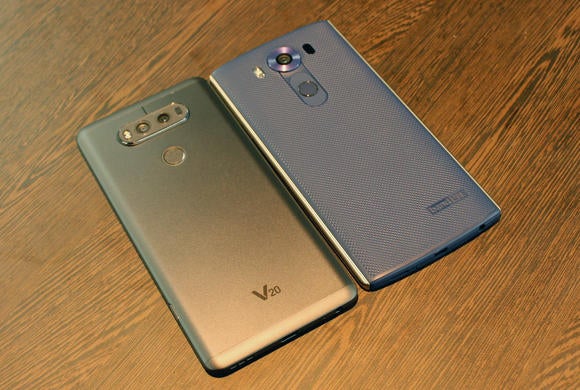
The V20 (left) drops the textured plastic surfacing bowed edges of the V10.
Hwang, head of product planning for Mobile, said the company wanted to give the V20 a more up-market, less “rugged” look, adding, “If we had applied that type of finish on [the V20], it may look like a barbell or something.” The new phone does indeed look more expensive than the V10, but I still miss that plastic backing, which provided some reassuring grip when using the phone with only one h. also dropped the vaguely lozenge-like shape of the V10, now the V series design aligns much more closely to the company’s G5 flagship phone.
Is the V20 a sophisticated-looking phone? Sure. But its design is also rather anonymous-looking, whereas the V10 had its own loveable oddball character.
Flipping the phone over, I’m impressed by ’s new “second screen,” which sits above the main 5.7-inch, 2560×1440 display. This thin, always-on screen can display notifications, music controls, a camera quick-launch button, other shortcuts— now it’s noticeably, palpably brighter in the V20, jumping from a claimed 35 nits to 68 nits. The second screen text renders in a larger font as well.
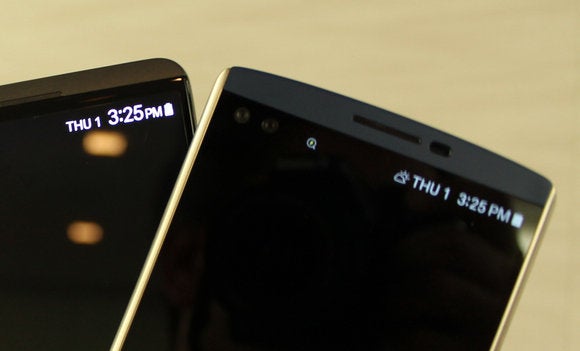
The V20 second screen is noticeably brighter than the V10’s.
A new approach to battery swaps
ke any proud superphone, the V20 has a removable battery, is now on its third battery extraction scheme since the V10 was released last year.
th the V10, you stuck a fingernail in the charging port, pried off the back case to get to the battery. It was a fumbly, inelegant solution. Then, in its 5.3-inch G5 flagship, introduced an entirely new extraction system that stuffs the battery into an end-cap, or “chin.” In this scheme, you press a button on the edge of the phone to release the chin, then you basically snap the battery off its mooring. Easier? Yes. But the G5’s scheme is still flawed, for a number of reasons I describe here.

The V20 opens up like a make-up compact. That rear panel is super-strong.
Now, with the V20, has introduced an updated version of the V10 scheme. Instead of poking around in the charging port, you press a button on the side of chassis to disconnect the back panel from the rest of the phone. It’s easier than the V10’s approach, but I still found removing the 3,200 mAh battery to be a bit finicky, as it was difficult to tell when the two halves of the phone had disengaged. at’s more, the panel didn’t snap back in with absolute confidence. I heard only one barely audible click to signal the phone was whole again, but who knows, maybe this is an operation that becomes second-nature with practice.
During the demo, I asked Hwang if the new battery extraction approach in the V20 will be carried over to an evitable G6 flagship. His answer was most noteworthy because he didn’t categorically say the G5’s chin was a success will continue for another generation: “I cannot comment about future products, but yeah, we’ll see, we’ll see,” Hwang said.
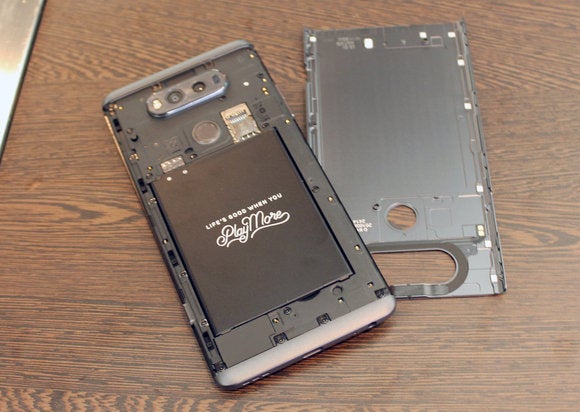
The V20 comes with a 3200 mAh battery.
If nothing else, playing with the new extraction method gave me a great opportunity to test the strength durability of the aluminum 6013 back panel. I didn’t try to bend the panel with all my strength, but I did torque the panel with way more pressure than I’d ever exert on a component that I personally paid for. And bend it did not.
High-definition audio recording
The V20 is powered by a Qualcomm Snapdragon 820 processor, just like all the other flagship-caliber Android phones shipping today. The processor is mated to 4GB of memory, 64GB of storage comes stard. You can also add up to 2TB of storage via a MicroSD slot. There’s a rear fingerprint scanner for security authentication, the V20 supports QuickCharge 3.0 for fast-charging. Add in Android 7.0 Nougat, you have a phone that should interest any Android enthusiast who just can’t live with a display smaller than 5.7 inches.
But what if you actually want to record music make videos to quasi-pro stards? For the content-creation enthusiast, has a bunch of answers.
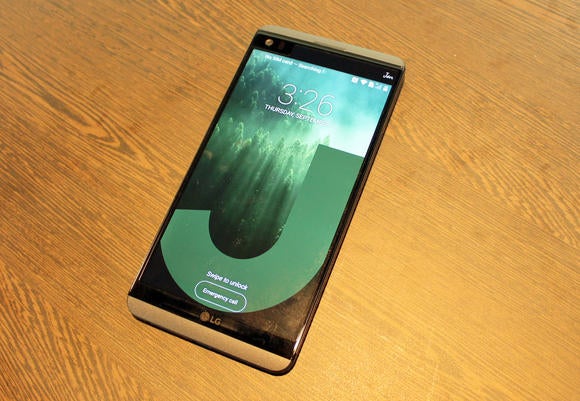
You can set your lock screen’s wallpaper to mirror the first letter of the name you put in the second screen’s signature. Nice to meet you. My name is .
t’s start with audio recording. is pimping a high-def, 24-bit/192kHz audio recorder that promises 6.5x more accurate sound than 16-bit alternatives. To prove the claim, Hwang played two audio clips of bizarre forest sounds, one recorded at 16-bit, the other at 24-bit. The higher-def clip was definitely louder more detailed. So there’s that.
also notes the V20 has three microphones that provide better capture of loud sounds in the 120dB to 132dB range. The upshot is that when you’re shooting video at concerts, your audio track should be higher-def with less clipping.
Fancy new video tricks
On the video front, the V20 introduces a number of interesting technical solutions, starting with Steady Record 2.0, a video stabilization technique that leverages new EIS (electronic image stabilization) technology from Qualcomm. says Qualcomm’s improved EIS is exclusive to the phone, reduces latency in the interface between the phone’s gyroscope the video image, helping to smooth out shaky video. The V20 also uses DIS (digital image stabilization) to improve smoothness further.
After you’ve shot your video, DIS analyzes every frame, comparing it to some 15 to 20 neighboring frames, both forward back. Then the algorithm adjusts the frames to make objects appear in the same position. ly, I was impressed by just how well Steady Record 2.0 performed. Shooting a video in ’s demo room, I rocked swayed the V20 like a man possessed, but the resulting video was remarkably smooth with minimal “jello” effects. It was just a quick little experiment, I only got to see the video output on the phone, but the results were impressive.
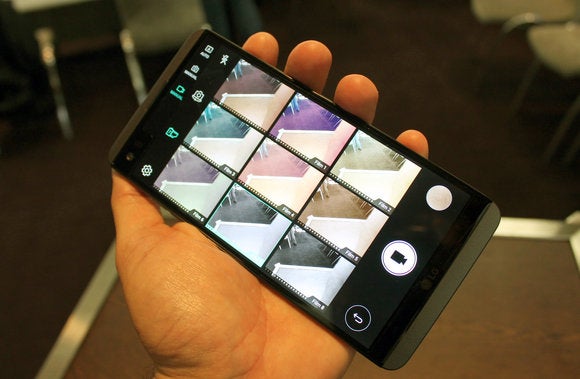
Besides offering manual video controls, you can choose various video filters that mimic the appearance of specific film stock.
And there’s more. In addition to laser-detection autofocus (which helps the camera quickly find focus in low light conditions) phase-detection autofocus (which helps speed up focus on moving objects), the V20 also features tracking focus. If I underst correctly, you can select a specific object when you’re shooting a video, the camera will stay locked on that target as you record the action.
Finally, has added eight “film effects” to the V series’ already fine set of manual video controls. is quick to point out these aren’t mere filters. No, they’re effects that specifically mimic the look of various film stocks, like Fuji Agfa. In the V10 they were only available for still images, but now you can apply them to moving pictures. In real-time. This feature is easy to use, will certainly give smartphone videographers a rather subtle collection of effects to play with.
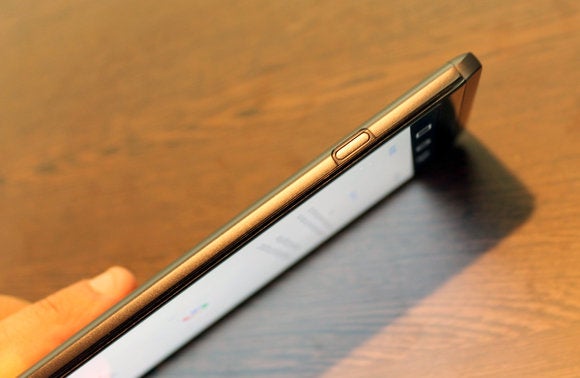
That’s not a power button. You push that button to eject the rear panel for battery removal.
V20, xel Xor Galaxy Note 7?
I didn’t get a chance to test the audio output quality of the V20’s Quad DAC. It offers 32-bit fidelity, 75 individual volume increments, support for a slew of lossless formats. Nor did I test still image capture with ’s dual cameras, which now offer wide-angle support front back.
For now, I’ll just kick back wait, pondering which phablet will become my new daily driver. 5.7 inches is my ideal display size, so I’m looking forward to fully vetting the V20, as well as waiting for Samsung’s Note 7 smoke to clear, seeing what has in store via its update to the Nexus 6(presumably called the xel X/a>). has never done a lot with its Nexus camera experiences, so with Nougat already installed, the V20 could be a very compelling choice.
















